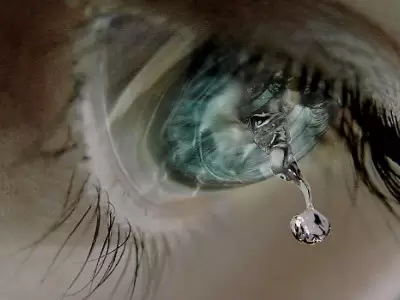Surgical Techniques in Rhinoplasty 2
The Goal of the Rhinoplasty Operation
In your rhinoplasty operation, shaping of the nose with the most appropriate and natural appearance should be targeted. The biological properties of the present tissues have important effect on the result of this surgical process. That is, the thickness of your skin, delicacy and form of your present cartilages, your wound healing properties and the nose operations that you have previously undergone have important effect on the results of your rhinoplasty.
Your nose is located in the center of your face and is the first structure that attracts attention when you look at the mirror or when someone looks at your face. A beautiful and attractive nose is the one that has certain proportion within itself and the one that is not indistinct and that shows itself. Therefore, the goal of the operation should not be making a very beautiful nose; it should be making the most appropriate nose. To achieve this goal, present tissues may be reduced most of the time, and in some patients who have undergone surgery before, some parts should be enlarged by adding tissue to the nose.
In situations in which addition of tissue to the nose is necessary, patient’s own tissues like cartilage pieces that are taken from the ear or the ribs are preferred when there is no available cartilage remaining in the nose. If all kinds of materials other than the tissues of the patient himself/herself are not used for supportive purposes, long term success rates are low and the probability to experience problems like infection, absorption or rejection is high. Cartilages of the ribs that are called homograft, obtained from the cadavers and refined from their antigenic structures with special process are the mostly preferred materials to hide the superficial contour irregularities. Though they use volume in the middle and long term, since they turn into a strong connective tissue, their effects on the contours of the nose continues.
Surgical Approaches and Techniques in Rhinoplasty
Rhinoplasty surgeries are one of the most frequently performed aesthetic operations. Though the duration of the operation varies according to the type of the malformation in the nose, concurrent pathologies that need intervention in the same session like intranasal deviation, nasal turbinate hypertrophy, chronic sinusitis and to the surgical technique that will be applied, it usually lasts for 1.5-2 hours. However, in special situations in which tissues are required to be taken from other regions like the ear and the ribs, this duration can be longer.
Surgical Approaches
There are two main surgical approaches to access the bony and/or cartilaginous deformities of the nasal anatomy in rhinoplasty surgery. These are;
- Open approach
- Closed approach
Surgical Techniques and Technologies in Rhinoplasty
In recent years different surgical techniques and technologies has been introduced in aesthetic nasal surgery and all of them can be performed through open or closed approach. Most popular of them are as follows;
- Micro-rhinoplasty
- Tip-rhinoplasty
- Preservation rhinoplasty
- Ultrasonic piezosurgery
In patients having a small amount of malformation at the dorsum of the nose and with patients not having a wide upper bone, micro-rhinoplasty technique may be used. In this technique, the dorsum of the nose is reached through the intranasal incisions (closed rhinoplasty approach) and the small bump (hump) on the dorsum of the nose is shaped (rasped) by using special rasping systems (micro motors). Since the intervention is quiet limited, fractures of the side bones in order to give the dorsum of the nose its natural round shape are not required and the intervention to the tip of the nose is very limited, recovery is usually completed within a very short period without the occurrence of purple color change and swelling around the eyes. The most important condition in being successful in micro-rhinoplasty technique is the selection of the appropriate patient and realistic clarification of the expectations of the patient and the doctor from the surgery.
Operations that are performed just to correct the malformation of the anterior cartilaginous part (tip) of the nose without intervening the bony structures is called tip-rhinoplasty or tipplasty. In these operations, except for very limited problems, almost always open technique is preferred. Correction of the projection problems and asymmetries of the tip of the nose, reducing the stuffed nose tips, to make the tip in the appearance of the profile explicit or correct the cartilage angulations that narrow the entry of the nose is possible with this surgery. Since bone structures are not intervened during the operation, swelling and purple discoloration around the eyes are generally not observed. After the tipplasty operation since the application of a bandage for a week is enough, patients return back to their normal daily life quickly.
The most ideal approach for patients having a malformation or asymmetry on the tip of the nose besides the upper bony part, patients who have undergone surgery previously and/or patients whom have to be intervened due to intranasal septum deviation with rhinoplasty in the same session is open rhinoplasty technique. Since in most of the patients who will undergo rhinoplasty the tip of the nose should also be intervened, open rhinoplasty is today the most preferred surgical technique.
In the open rhinoplasty surgery, the operation starts by making a horizontal incision in the middle of the region between the two nostrils (columella) (Figure) and after the skin of the nose is lifted by this way, all cartilage tissues that form the tip of the nose are revealed and the surgery can be performed under direct vision. Since symmetry can be provided completely in this operation and since cartilage supports can be placed and fixed to the regions where required with sutures, the risk of shape changing for the nose or the tip of the nose, lowness of the tip of the nose, shifting of the septum after the surgery is minimized.
In the open technique, since septum can be controlled completely, the deviations especially near the dorsum of the nose can be completely corrected with the addition of cartilage pieces with appropriate methods, cartilage deficiencies that formed in previous surgeries can be repaired completely and symmetrically. In open technique surgeries, since the incision made to the tip of the nose is closed with appropriate technique and materials, it recovers within 1.5-2 months and become invisible in most cases.

Figure: The incision line performed in open rhinoplasty surgery
In patients who do not have a significant problem on the tip of the nose and in the septum, having the main complaint as bone and cartilage protuberance on the dorsum of the nose (dorsal hump) or having simple superficial irregularities on the dorsum of the nose following a previous surgery, closed rhinoplasty technique is preferred.
In this technique, the dorsum of the nose is reached through the incisions made through the nostrils and the required interventions are made to the malformations. Closed technique provides short duration of the operation in selected patients, since a small amount of edema is formed at the tip of the nose, recovery takes a shorter time.
In the operations, after the removal of the bone and cartilage protuberance at the dorsum of the nose (dorsal hump, in order to give a natural appearance to the nose, the bones of the nose are brought together by breaking them and due to these fractures, some amount of purple color change and swelling occurs in around the eyes after the surgery. These edema and swellings disappear within 7-12 days completely.
After application of ultrasonic piezosurgery technology, which prevents soft tissue damage while shaping or cutting the bones, the bleeding related purple color change around the eyes became significantly less in rhinoplasty operations.
In selected patients with limited dorsal deformities without external asymmetries and or severe intranasal septal deviations “preservation rhinoplasty” can be an alternative technique to preserve the integrity of the nasal dorsal bony and cartilaginous structures. In this technique the bump in the dorsum of the nose is pushed down after preparing a space just under it in order to create a straight and natural profile.
Piezoelectric surgery is a relatively new technology which provides cutting, rasping and shaping of the bony structures of the nose with minimal soft tissue trauma and facilitates healing and provides more control during the bone interventions
Since the placement of packing is not necessary except for some special situations, operation can be performed in most of the patients without packing.
Apart from that, the bandage and plastic cast that is applied outside the nose is renewed in the first week after the surgery and are removed in the 10th-14th days.
Since the nose is structure that cannot move, severe pain is not experienced after the surgery and simple painkiller are generally sufficient.
During the operation, if a surgical intervention other than cauterization, radiofrequency or microdebrider that do not lead to bleeding is performed to reduce the size of the nasal turbinate, then intranasal packing may have to be applied in order to reduce the risk of bleeding after the surgery. This packing has the structure of a soft sponge and do not cause a serious problem other than congestion and is removed on the second day following the operation.
After the surgery, resting in an environment that is not too hot is recommended with the head slightly elevated.
Cold application on the eyes in intervals for the first 24-36 hours is useful in order not to have the swellings and purple color change around the eyes and also for rapid recovery.
For rind formation and congestions that may occur inside the nose in the first week, patients may have to go back for a control.
After rhinoplasty surgery, recovery takes time and complete recovery may last for 6-12 months according to the type of the surgery. During this process, the desired result is achieved quickly within the first weeks and then slowly in the following weeks. Therefore, it is natural for the appearance of the nose not to be as desired during the early period following the surgery, as edema decreases and the skin attains its normal thickness, the shape of the nose will change as desired. Similarly, though differences may be present due to the used technique and the performed process, the observation of the desired result exactly in the early period following the operation, should bring the possibility of the formation of a different result to the mind.
It will be appropriate to follow the changes in the shape of the nose that form in time, with the doctor performing the operation.
POINTS TO CONSIDER AFTER RHINOPLASTY OPERATION
- The cast on your nose will stay for 10-14 days. It should not be wetted. If you stay in very hot or steamy placed, the cast may be loosen or fall off due to sweating.
- During the first 24-36 hours, cold application on your eyes should be performed in intervals (5-10 minutes per hour).
- After the surgery, you have to avoid physical activities and strain as much as possible and should rest as you head elevated.
- Avoid excessive facial mimics and laughing for a week.
- If open technique is used, then sutures on the tip of your nose will be removed by your doctor after 5-7 days.
- After your nose surgery, swellings may form under your eyes and on your face. These swellings and discolorations will completely disappear within 1-2 weeks.
- After the bandage is removed, you can clean your nose gently with liquid soap or with special lotions and you can apply make up.
- It is appropriate not to wear turtleneck sweater or clothes with narrow necks that increase the risk of impact to the nose within three weeks following the surgery.
- You should not touch your nose harshly and avoid activities that have the possibility of impact for the first 6 weeks.
- It is recommended that you should not wear eyeglasses for 8 weeks and after this period; you should wear eyeglasses with light frames.
- You should protect your nose skin from the sunlight and avoid sunburn for the following 3-6 months.
- Since extremely hot environments may lead to swelling in your nose, you are recommended not to stay in these environments for 8 weeks
- You must not take medications other than the ones prescribed by your doctor.






Comment
Your Contact Information will not be shared in any way. * Required Fields